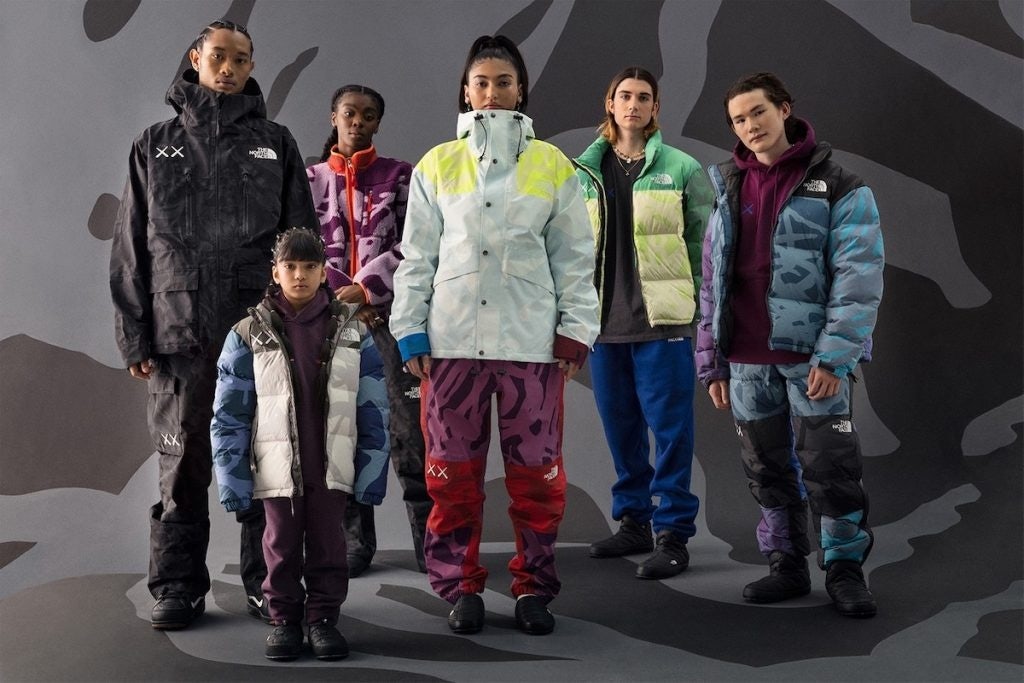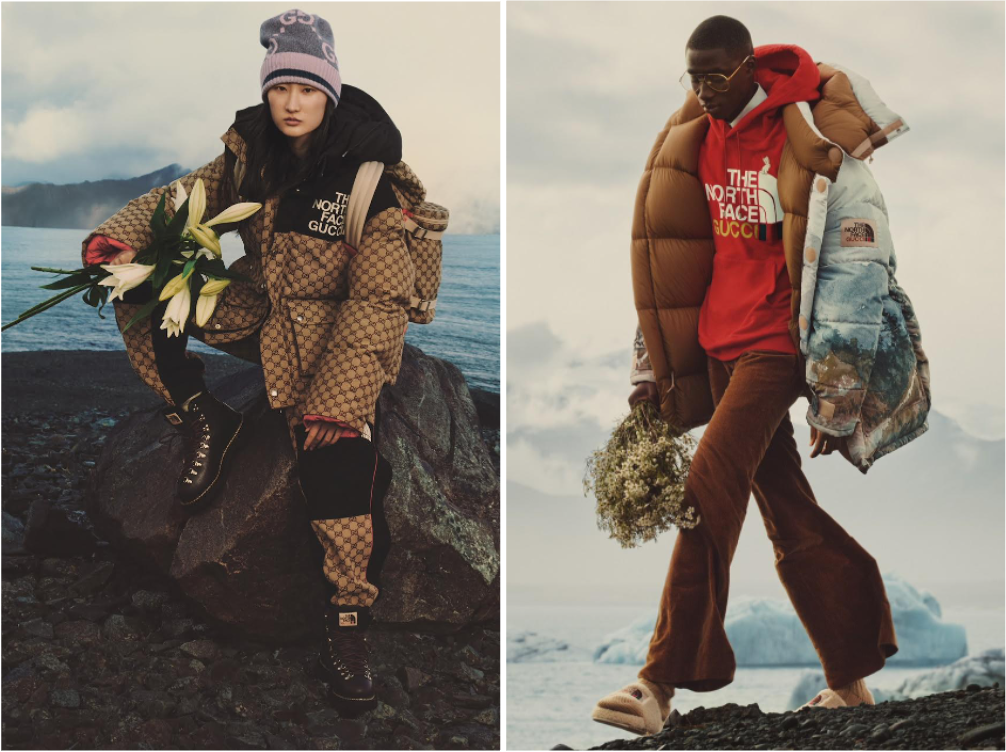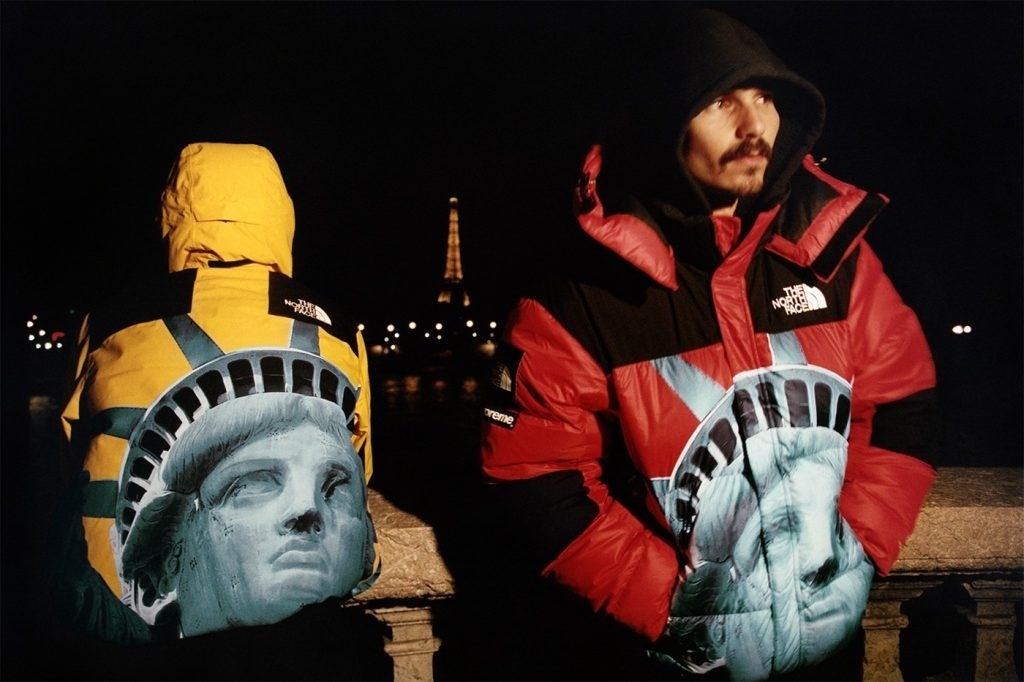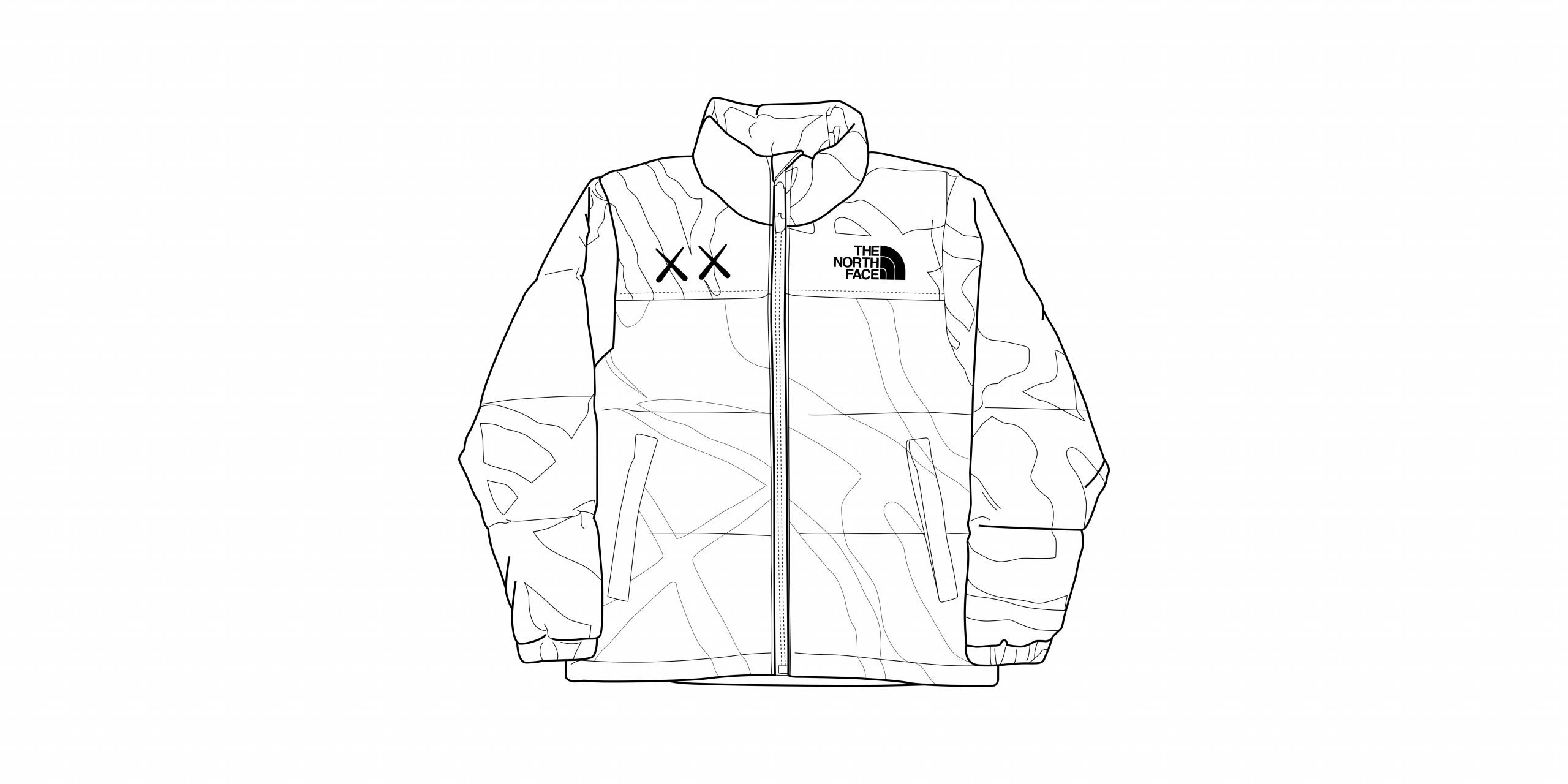In February, The North Face launched their latest collaborative capsule collection, this time with Brooklyn-based artist and designer KAWS.
The bright and vibrant co-branded collection bears KAWS’ “XX” motif on outdoor accessories and apparel, including beanie caps, mitts and balaclavas, fleece jackets, a protective bib and the brand’s iconic Nuptse Jacket. About 80 luxury and contemporary fashion retail stores and e-commerce sites carry the collection, like Dover Street Market, Matchesfashion and LN-CC, all of which also carry the brand’s mainline.
If you blink, you might miss a collaboration or two from The North Face. The VF Corporation-owned brand has been a longtime collaborator with now fellow VF-owned streetwear brand Supreme, teamed with Gucci twice on collections (with the first even promoted via Pokémon Go), and collaborated with Dr. Martens through their Purple Label, the line headed by Nanamica and (until recently) available exclusively in Japan.

For at least a decade, collaborations have served brands as marketing vehicles to bring new energy to their offerings in ways that they cannot do as a single entity, while also providing opportunities for emerging and well-established brands to share customer bases. Consumers typically go to The North Face for cold weather outerwear, but collaborations allow for the brand to connect with consumers in new contexts like avant-garde design or streetwear.
“The North Face was an early adopter of collaborative products because it worked with partners who understood the power of a brand’s ‘second life’,” said Jian DeLeon, Men’s Fashion and Editorial Director for Nordstrom.
But how has The North Face retained their cultural currency and clout despite their market not being a collectible like watches, handbags or sneakers? Simple, it’s their lore that bridges mountaineering with big cities.
Early Adoption of Collaborations#
The brand is equally respected for their advancements in outdoor apparel built for frigid temps as they are for being the outerwear of choice among hip-hop’s top stars of yesteryear. They also, like many brands, draw attention with their higher prices that communicate quality and exclusivity.
The balance of outdoor heritage and cool culture makes The North Face an attractive partner to brands like Gucci, which applied their signature monogram pattern to a North Face padded jacket in their 2020 and 2021 collaborations, a dream idea about 25 years ago.
They are the leader of a few outerwear brands that have captured cool alongside Moncler, Snow Peak, Arc’teryx and Canada Goose to name a few, while others, Patagonia in particular, differentiate themselves by “refraining from these kinds of apparel collaborations,” said DeLeon.
The North Face’s first major collaboration with Supreme for Fall/Winter 2007, according to Grailed, nodded to their hip-hop roots. Their competitors took different approaches.
Arc’teryx first garnered attention with their minimal, high performance Veilance line, but initially entered collaborations with Beams and Concepts in the early 2010s. More recently they teamed with streetwear brand Palace, high fashion label Jil Sander and have formed an ongoing partnership with NYC-based upcycling designer Nicole McLaughlin. Columbia partnered with New York City-retailer Kith, and longtime French outdoor label Moncler introduced their Gamme Rouge and Gamme Bleu collaboration lines followed a decade later by their Genius platform where designers reinterpret their styles and utilize their technology to create new works.

Though The North Face x Supreme and Moncler’s Gamme Rouge and Gamme Bleu lines debuted closely in time, the former attracted a lengthy list of collaborators at a faster rate and of greater diversity, including Junya Watanabe, Maison Margiela, Extra Butter and Timberland and capitalized on the opportunities. Consumers witnessed the brand collaborate with their favorites on potential once-in-a-lifetime pieces worthy of collecting.
“Any designer or label that looks to tap into that rich iconography, from Junya Watanabe, to Supreme, to Gucci, does so from a sense of reverence of what The North Face stands for as much as a homegrown appreciation for the brand itself,” said DeLeon. “As a result, it’s become a status symbol for people who value quality, classic style, and things that are built to last—which happen to be three things that are also important to the luxury consumer.”
Commitment to Performance#
Too frequent of collaborations dilute the appeal of a limited-edition style, however. SNS co-founder and creative director Erik Manzano Fagerlind said, “Ten years ago, collaborations were a sure shot. All you had to do was say you’ve collaborated and it worked, but now there are so many that only the good ones work but it gets more attention than in-line product.”
“If they lose track of their sole purpose then it’s a slippery slope. Where do they go from there?” he asked. Fagerlind cited The North Face’s Purple Label and Steep Tech as maintaining the brand’s performance wear purpose, comparing to brands like Nike and Jordan that innovate their sneakers to continue their purpose of revolutionizing performance footwear.
“It’s become a status symbol for people who value quality, classic style, and things that are built to last—which happen to be three things that are also important to the luxury consumer."
Nanamica founder Eiichiro Homma co-founded The North Face Purple Label in 2003, and told Highsnobiety in an interview that the line mixes style and function much like Nanamica. Though the product performs as well as globally distributed North Face products, the limited distribution makes the products highly coveted.
The Steep Tech line was first introduced by free skier Scot Schmidt and graphic designer Dave Wachs who pitched the line to The North Face. According to Complex, the brand first released the line in 1991, shut it down in 1998 and revived multiple times and again 2021, 30 years after its initial introduction.
Both lines use the traditional scarcity model to drive hype, communicating quality through price and communicating exclusivity through limited distribution. This raises their lore among consumers seeking performance or a stylish and unique piece.
Co-signed by the Culture#
This lore contributes to one of fashion’s greatest phenomena: how performance gear finds its way to the streets.
Though down outerwear was produced for Antarctic temperatures, it has since managed to escape the frozen tundra for metropolitan cities. The North Face was founded as a climbing equipment store in San Francisco in the late 1960s, but much of their modern clout in collectibles come from their adoption by hip-hop culture, which laid the foundation for their streetwear roots in the same way that has been done for brands like Polo Ralph Lauren and Jordan.
“[The North Face] might have been meant for mountaineers and explorers, but was able to appeal to a subset of burgeoning pioneers like skaters, graffiti writers, and hip-hop artists,” DeLeon said. “They realized that speaking to a new audience didn’t have to mean alienating your old one.”
The brand’s Steep Tech jackets and beanies appeared in rap songs and videos like “Method Man” by the Wu-Tang Clan and Method Man and they were mentioned in The Notorious B.I.G. song “Dead Wrong” on his posthumous album Born Again. The shout outs further cemented the brand’s popularity in the ’90s in trendsetting hubs like New York City and with young consumers who looked up to these.

A New York magazine article from the mid-90s about “prep school gangsters,” private school students who dressed like their favorite rapper and committed petty crimes, captured the uniform of a cool, rule breaker and The North Face was outerwear of choice.
A myriad of styles made consumers targets for robberies in the ’90s, including The North Face’s Nuptse Jacket, which The Cut highlighted in 2018 with stories from New Yorkers who were jumped, jacked and robbed for the product. Any person brave enough to wear the style out on a consistent basis signaled they had the dough to buy it – and were tough enough to keep it.
The North Face and many other brands like Nike, Timberland and Polo Ralph Lauren still benefit today from rap music and hip-hop culture’s global adoption; the stamp of approval established a new heritage for these labels beyond their products’ intended uses like the basketball court, the outdoors and country clubs, respectively.
The brand continues to innovate their products despite finding success with past styles that have entered the realm of timelessness, but most of all, they know how to capture cool. This is why brands, designers and fashion houses find The North Face attractive as a collaborator: their products are stylish, have heritage on the streets and slopes and deliver on performance. Collaborations for The North Face are a co-sign for brands and for collectors, and though KAWS may be the latest in a long list of collaborators, he won’t be the last.
